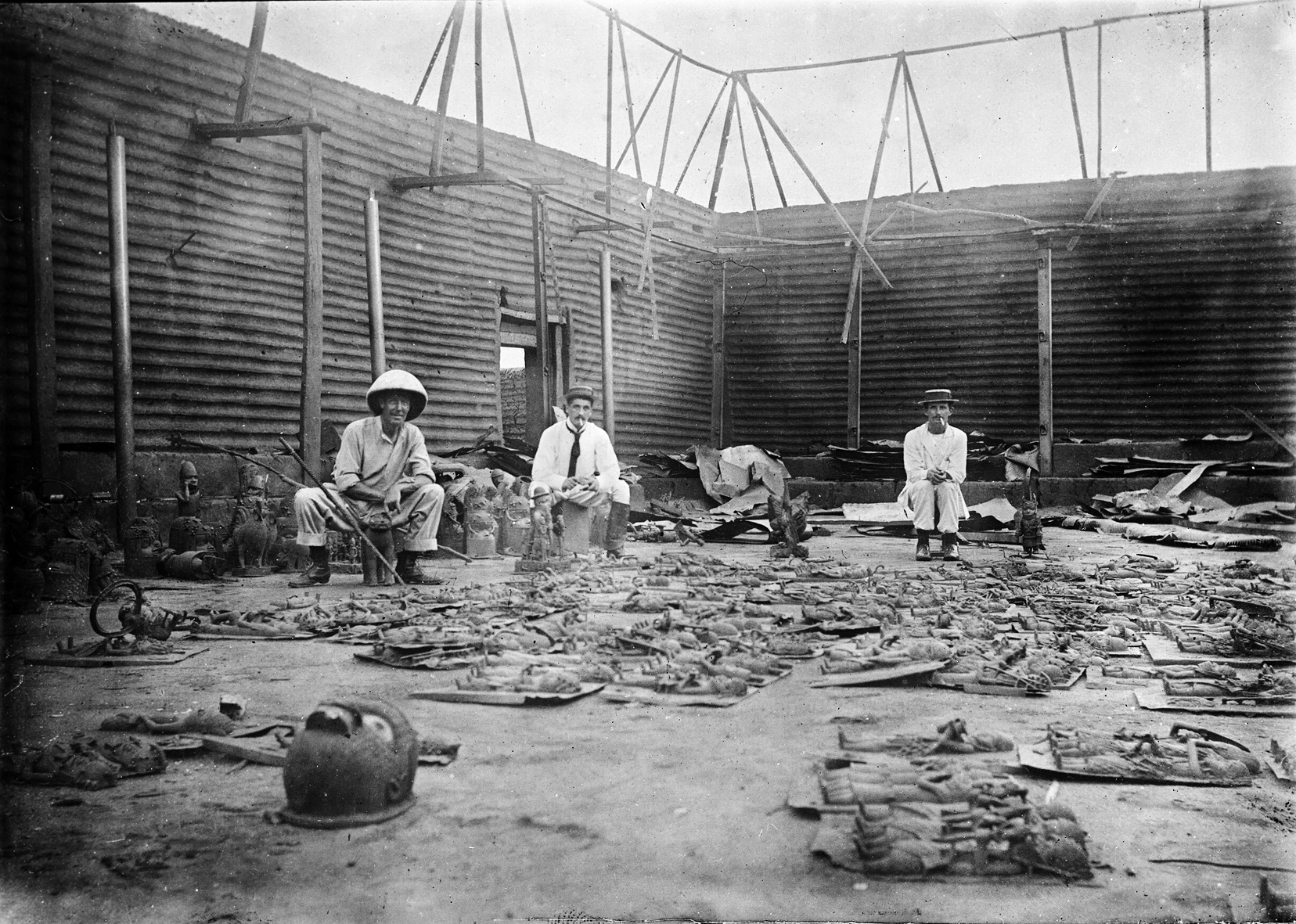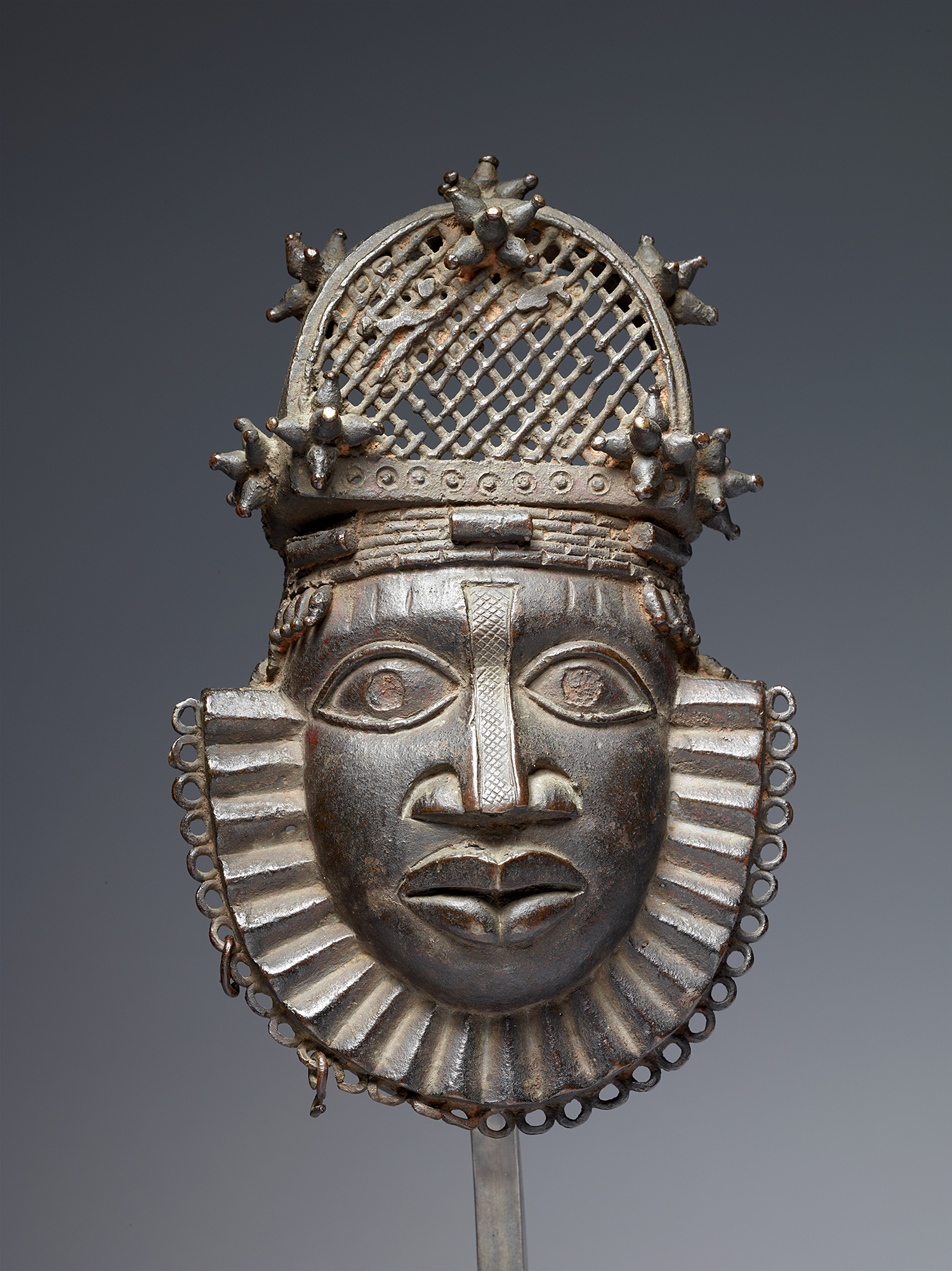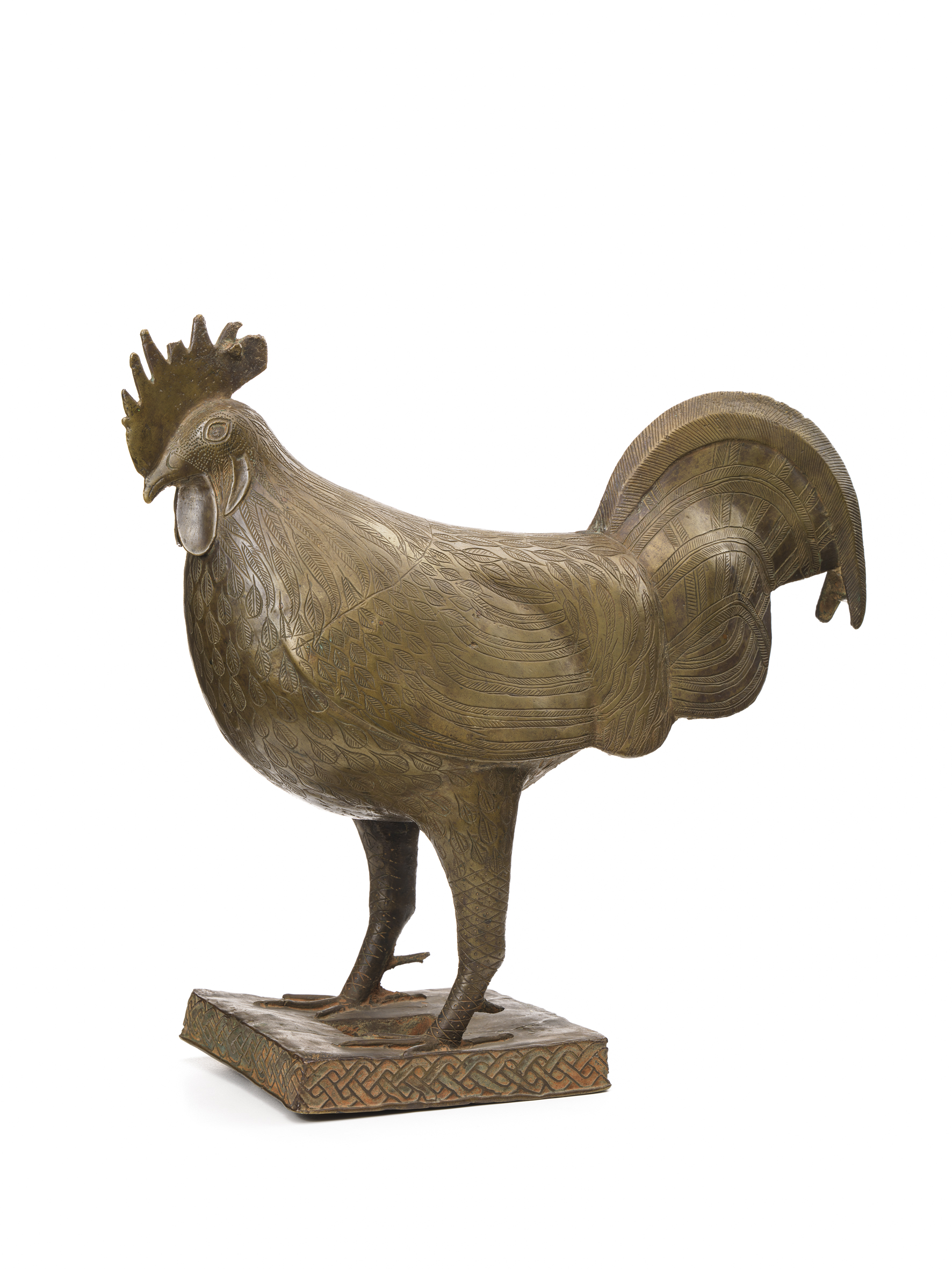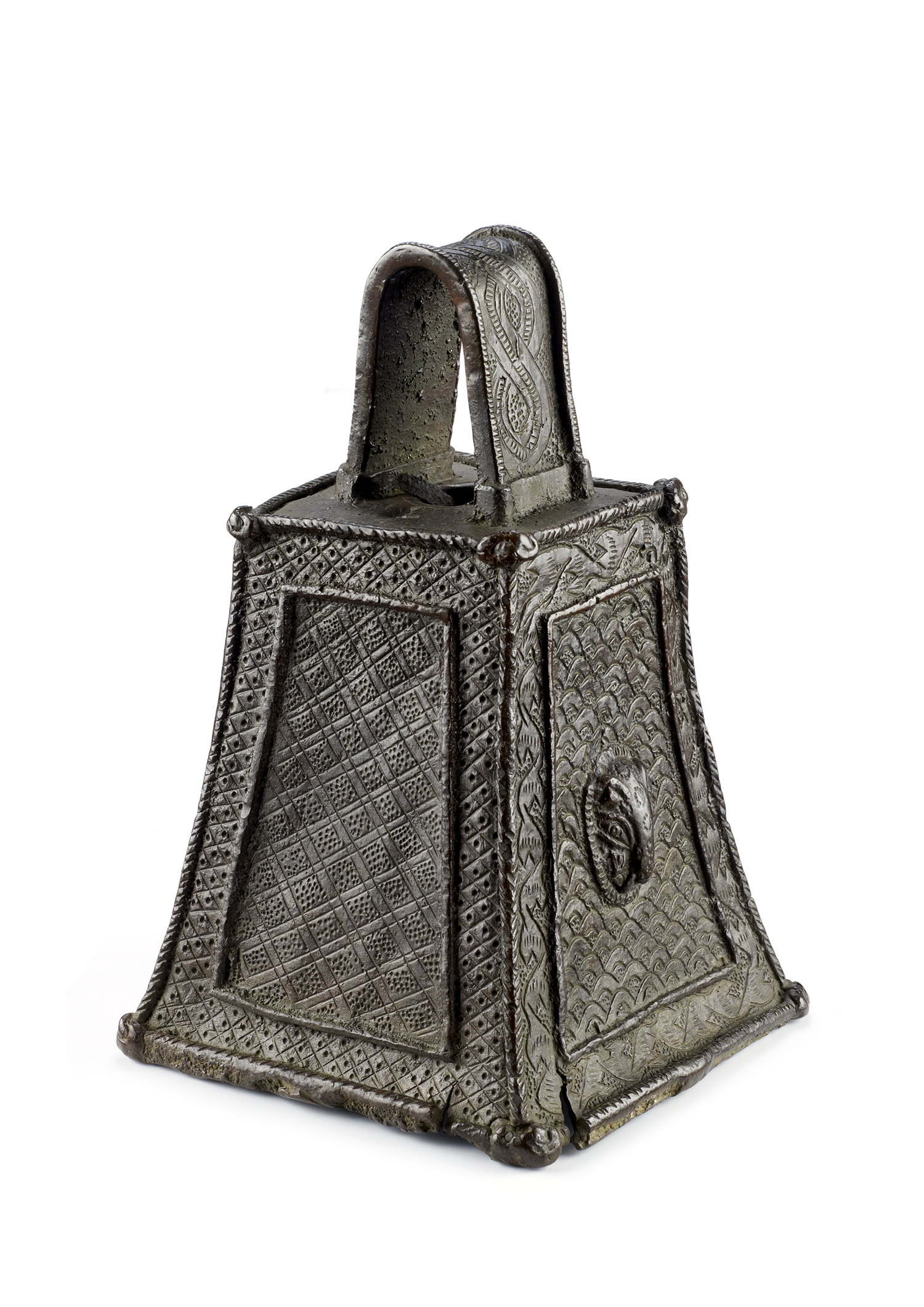
Looted colonial art: ‘There are no limits to restitution’

A new report reveals how Swiss museums have displayed art looted from the African Kingdom of Benin for decades. The idea of restitution is now on the table.
In the Rieterpark above Lake Zurich, “the splendour of the 19th century” can still be experienced today, according to the city tourism agency’s promotional literature. Amid century-old beech trees, and with a view towards the Alps in the distance, the Rietberg Museum displays art treasures from all over the world.

But right now, Abba Tijani is sitting in the museum because he wants something from the 19th century back. The director general of Nigeria’s National Commission for Museums and Monuments is in Switzerland because of the “Benin bronzes”.
Tijani is part of a Nigerian delegation that wants to discuss the future of the Benin bronzes on display in Switzerland with a group of Swiss museums – the Benin Initiative Switzerland (see below). “We want to give museums the opportunity to return these artworks to their rightful owners and exhibit them legally – to do the right thing,” he says.
Symbols of global debate
The Benin bronzes have become a key symbol in the debate about how to handle African cultural heritage. Not least because many of them are unquestionably looted: in February 1897, 1,200 British soldiers invaded the city of Benin in a so-called “punitive expedition”, burned everything down, and subjugated the kingdom to the British Empire.
They looted anything of value they found. Soldiers took thousands of sculptures, memorial plaques, and ivory carvings. Today, these objects are known under the generic term of the “Benin bronzes”.

The looting clearly shows the symbolic violence of colonialism. The bronzes were of great importance to the Kingdom of Benin (in what is now southern Nigeria). “Every time a new Oba – as the king of Benin was called – was crowned, he had a new one cast,” Tijani says. “This was a symbol of power. The bronzes were used to document the history of the kingdom.” That is part of the reason why the Benin bronzes have taken on such symbolic significance in the debate on restitution; in looting them, the British also stole history.
After the soldiers returned from battle, these sculptures soon found their way onto the art market in England and from there to collectors and museums in Switzerland. Objects from such “punitive expeditions” were long considered particularly authentic.
Today it is known that of 96 Benin bronzes on display in Switzerland, 21 were definitely looted and a further 32 are presumed to have been so – in other words, more than half overall. This was the finding of a report produced by the Benin Initiative Switzerland in cooperation with Nigerian historians and curators.
Today some 100 items in Swiss museums are assumed to have originated in the Kingdom of Benin. Even though there have not been any demands for restitution, eight Swiss museums have joined forces in the Swiss Benin InitiativeExternal link to investigate more closely the origin of their collections from the Kingdom of Benin in Nigeria. They work with Nigerian researchers and institutions.
A joint declaration has also stated that the museums are open to transferring the objects known or presumed to have been looted back to Nigeria.
Tijani greatly appreciates the initiative, especially since “the museums involved in the Benin Initiative Switzerland tackled the issue of repatriation before we even approached them,” he says.
The report, however, is only the beginning of a process in which other countries are a few steps further along: Germany agreed to return 1,300 bronzes in 2021, while British and American institutions handed ownership rights to Benin objects back to Nigeria in 2022. An exhibition is now planned in the US in collaboration with the Smithsonian in Washington D.C., which has returned several bronzes.

The high symbolic value of the restitution is demonstrated by comparisons with the fall of the Berlin Wall. Tijani does not think such comparisons are useful.
“The repatriation of Africa’s cultural assets deserves a lot of attention,” he says. “But you can’t necessarily compare this to anything else, it is a unique process. Something that was never expected to happen.”
Nollywood reverse robbery
The current response comes decades after the first demands were made. Nigeria called on Britain to return objects as early as the 1930s. Further requests in the 1950s and 1960s were ignored – although the problem of colonial-era looting was already being discussed internationally in the 1960s.
In the 1970s, Nigeria wanted to borrow the ivory mask of the Queen Mother Idia from the British Museum for a cultural festival, Festac77. Even this was refused for curatorial reasons. From then on, the mask became a symbol of futile demands for restitution.
SWI: What has been the reaction to your requests? Do you still encounter resistance?
Abba Tijani: No, we meet only little resistance. Even private owners who have works on loan in museums largely agree and think [restitution] is the right thing to do – and it is the right thing to do. Only the British Museum situation is still blocked.
SWI: What happens in a restitution case? How do you distinguish between what is returned and what can remain on loan?
A.T.: These objects were taken illegally, which is why they should belong 100% to Nigeria. But some of our artworks should still be on display in exhibitions, in part so that museums can tell the story of the looting and restitution. This must become part of the history of these objects. We decide what will be loaned and what will be repatriated in discussion with the museums. We are prepared to consider exhibition concepts.
SWI: Will the objects be exhibited differently in Nigeria?
A.T.: In Europe, the bronzes are often exhibited as mere works of art, but they had clear ritual functions. We will, for example, exhibit the objects as part of a shrine, together with videos showing the ceremonies in which they are used.
SWI: Will it be possible to return the objects to their ritual function after their return?
A.T.: For security reasons, they will probably not be able to leave the planned museum, as is the case with “living museums,” where objects can also be borrowed for rituals. But we plan to create spaces where people who have a special relationship with the objects can withdraw. There they can look at them in peace and also use them for rituals. It is also important to us to work with contemporary artists.
SWI: In the case of the Benin bronzes, it is clear they are looted art. With many other objects that were brought to Europe during the colonial era, the circumstances are unclear. What claims are still outstanding?
A.T.: The looting of the Benin bronzes is widely recognised and well documented. That is why the bronzes are at the forefront of the repatriation debate. So many other objects were stolen and taken by force, but there are also objects that were bought under unfair conditions – for example, because the sellers were completely impoverished. We have to investigate these stories more thoroughly in the future. There is no limit to which objects can be repatriated and which cannot.
In 2021, Nollywood director Lancelot Oduwa Imasuen had a Nigerian action hero steal his ancestral heritage from the British Museum.
When he is arrested by museum guards, his hands full of sculptures, he shouts, “Let go of me!!! It belongs to me!” This scene illustrates how bizarre the refusal to return the objects must seem in Nigeria.
The shift in attitude has much to do with French President Emanuel Macron, who announced in 2017 during a state visit to Ouagadougou, Burkina Faso, that France was ready to return African cultural assets. He also commissioned an influential report to discuss the issue of restitution. But movements like “Rhodes Must Fall”, “Black Lives Matter” and various smaller initiatives also contributed, Tijani says.
“Increased international attention on the disenfranchisement of Black people has also contributed to the fact that the time has finally come,” he says. He has written letters to several museums asking them to address the restitution issue.
Translated from German by Catherine Hickley


In compliance with the JTI standards
More: SWI swissinfo.ch certified by the Journalism Trust Initiative















![The four-metre-long painting "Sonntag der Bergbauern" [Sunday of the Mountain Farmers, 1923-24/26] had to be removed by a crane from the German Chancellery in Berlin for the exhibition in Bern.](https://www.swissinfo.ch/content/wp-content/uploads/sites/13/2025/12/01_Pressebild_KirchnerxKirchner.jpg?ver=a45b19f3)



















You can find an overview of ongoing debates with our journalists here . Please join us!
If you want to start a conversation about a topic raised in this article or want to report factual errors, email us at english@swissinfo.ch.